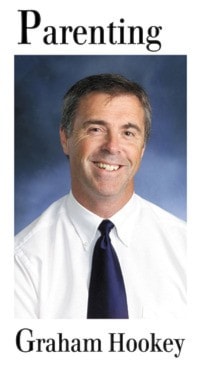I watched a few different news broadcasts last week where the “story” about the Japanese tragedy was, in essence, instructions from child psychologists about how to talk to our children about the events.
Initially, I found that rather odd and self-absorbing. After all, the disaster in Japan is not about our children. But after I had watched a couple of people speak, and thought a little more about it, I was much less critical of the concept.
To some extent, my initial reaction was based on my own belief that we should not immerse our children in the tragedy of the daily news. I remember, clearly, being in the U.S. when the events of Sept. 11, 2001 brought a nation to its knees and provided unending coverage of sadness and devastation to every household. Children who stayed home from school that day returned the next day with a great deal of tension and nervousness. Those who had attended school that day, and spent most of their day doing normal school activities and playing with their friends, were still saddened by the events, but did not seem as deeply depressed.
It is one thing for children to be informed (something I do think is important) and another for children to be pummeled by the news. Most children, by choice, will not spend much time watching the news unless the adults draw them in and keep them glued to it. Frankly, most news broadcasts are too tedious and repetitive for kids. Listening to the dulcet tones of news broadcasters for hours on end is a sure-fire way to cure insomnia.
But children will be attracted to our reaction to news. If we are glued to the television and emotionally distraught over what we see, then so too will they be heavily engaged in the emotions of the events.
In the case of Japan, I think we were easily drawn into the incredible scenes of carnage because the heavily wired country provided a large number of videos of the brute power of a tsunami. It was both terrifying and fascinating to view them and day after day new versions arose to keep us coming back for more. That’s what news broadcasts are designed to do, to keep you on the edge of your seat and bearing witness to history.
As both a parent and an educator, my strategy for such moments in history has been the same, although it varies slightly by the age of the children. We have to give children as clear an account as we can of the events and the repercussions of the events. Tiny, graphic details are not necessary, but honesty is. Life is not always kind and bad things can happen, sometimes by human choice and sometimes by the forces of nature.
Once there is an understanding, I like to divert attention from the incessant viewing of tragedy to the more constructive process of coming up with a way to help. Whether it is collecting clothing to send somewhere or creating fundraising opportunities to generate money to provide relief support, there are positive actions that students of all ages can take to respond to tragedy.
This shifting of youthful emotions from the negative to the positive is, in my opinion, better done sooner rather than later so that the angst young people feel can be counterbalanced by a sense of purpose and satisfaction that they are not helpless in the face of tragedy.
If you are wondering what to say to your children about Japan, how about something like: “What do you think we can do to raise some money to help the Japanese replace the homes and belongings they have lost?”
That shift from anxiety to purposeful action might be the best way to help them understand that even in the face of tragedy, good things can come from human compassion.
Perhaps then, if they are ever faced with their own challenges, they might remember that there are others out there who will do their best to help them in their time of need.
Graham Hookey is an educator and writer. Email him at ghookey@yahoo.com.
